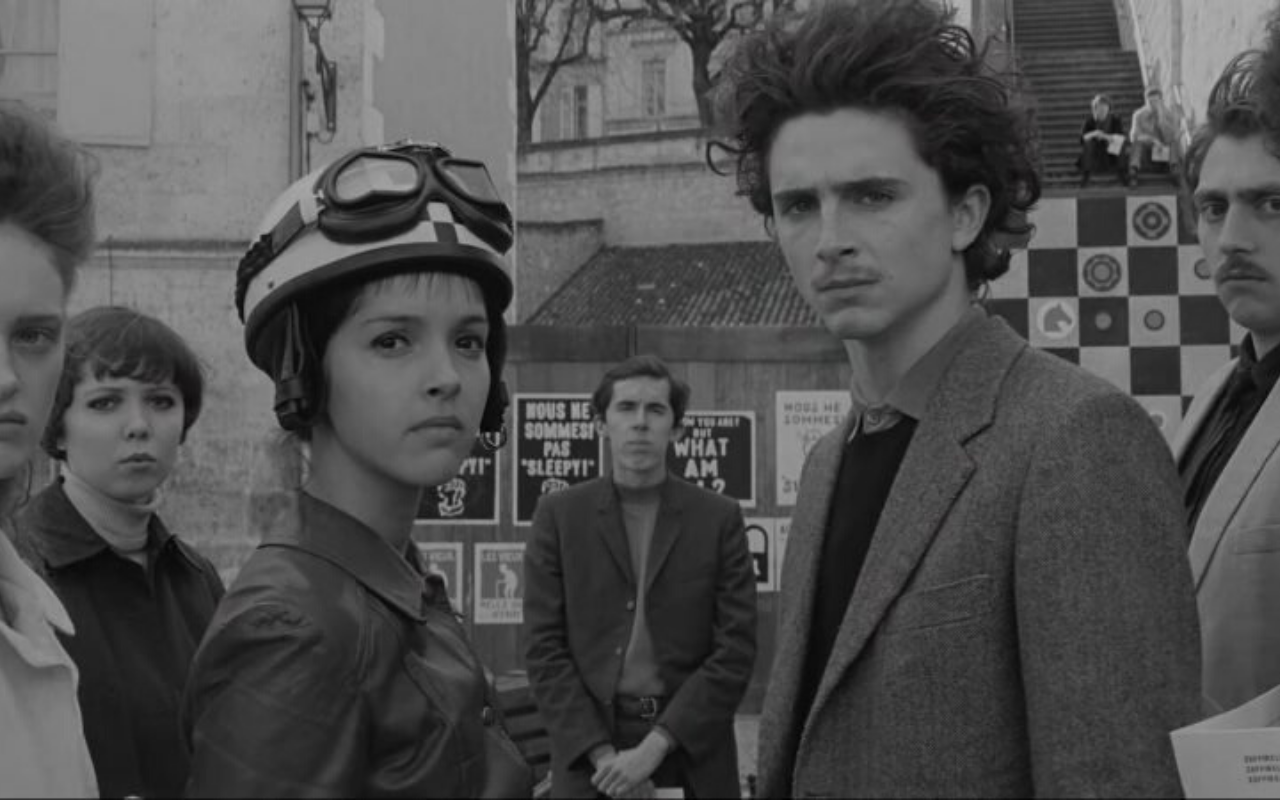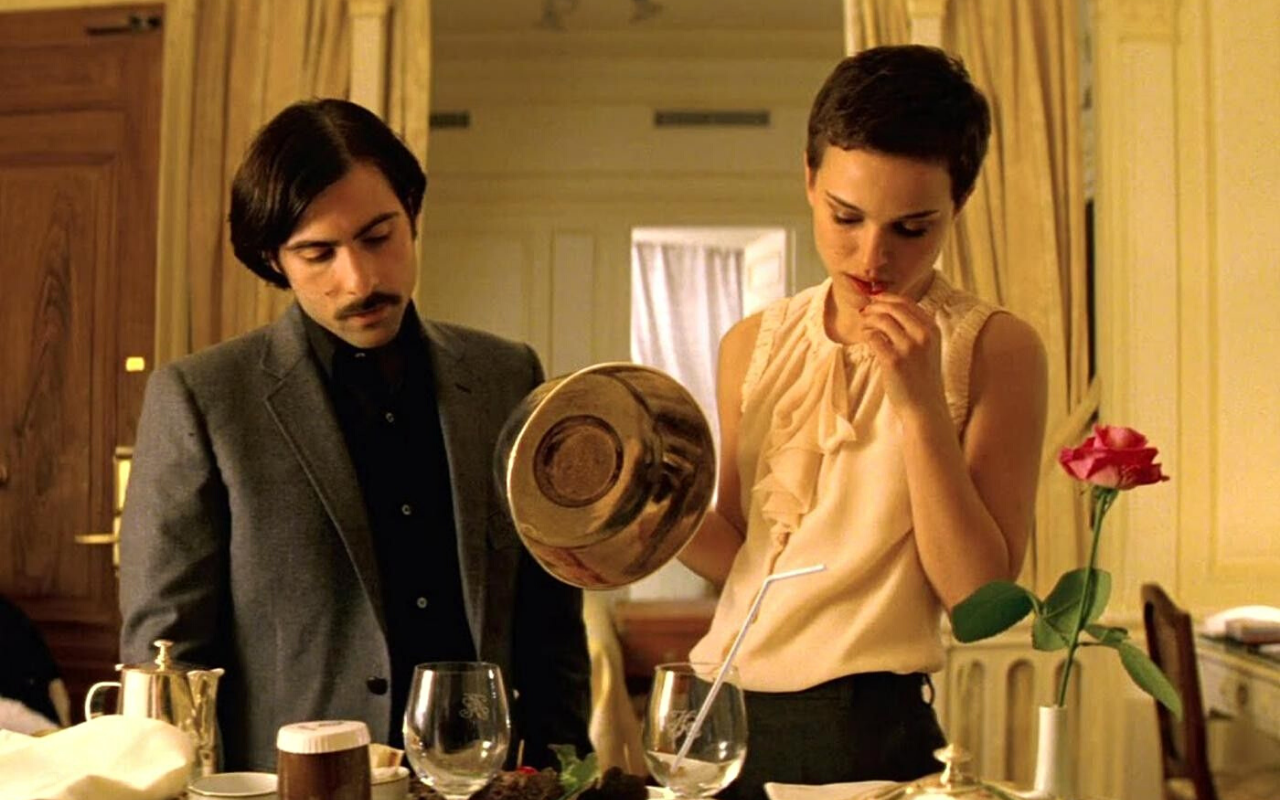The defining trait of a Wes Anderson film is the auteur’s whimsical and opulent Art Nouveau-ish sets, typically saturated in bright colours and pastel hues. Anderson’s use of colour and setting dictate the tone of his scenes as well as the characters populating them—resulting is a visually stunning, eccentric and captivating story.
With The French Dispatch joining Anderson’s list of visually sumptuous films, let’s look at some of the filmmaker’s most charming film sets to date:
1) The Grand Budapest Hotel (2014)

Arguably Anderson’s best film to date, The Grand Budapest Hotel features some of Wes Anderson’s best utilisation of colour to tell his story. The candy-pink exterior of the hotel on the movie poster is actually that of The Bristol Palace Hotel in the colourful Czechoslovakian spa town, Karlovy Vary. The interior of the movie’s hotel was filmed in one of the oldest shopping centres in Germany known as Görlitzer Warenhaus, a real place you can visit.
Anderson’s fictional city of Lutz captures an imaginary burlesque European city in which the film’s main characters, hotel concierge Monsieur Gustave H. (Ralph Fiennes) and lobby boy Zero (Tony Revolori) go on exciting and dangerous adventures while pursuing a priceless inherited painting. The film won four Oscars at the 2015 Academy Awards, including the awards for Best Production Design and Best Director.

2) Moonrise Kingdom (2012)

Set in the summer of 1965 on an island off the coast of New England, Moonrise Kingdom tells the story of young teens Sam (Jared Gilman) and Suzy (Kara Hayward), who fall in love and run away together. The entire movie is drenched in a dreamy, sepia haze, even in the outdoors where most of the film occurs. Suzy’s home, the Bishop family house, is quintessential Anderson with a splash of ’60s retro—from the warm yellows and golds and brick reds, to the mismatched furniture and symmetrical corners.
Likewise, the costumes of the two lovebirds are curated to the tee. Suzy’s pink and red ensemble stands out against the yellow-toned backdrops, and Sam’s Scouts’ uniform complete with racoon skin cap embodies the quaint and free-spirited nature of the film, as the young couple pursue love against all odds on the sleepy island.

3) The French Dispatch (2021)

The director’s latest creation, The French Dispatch, is as outlandish and hilarious as Wes Anderson movies get. A love letter to journalists, the film depicts a collection of unique stories that make up the final issue of an American magazine published in the made-up 20th-century French town of Ennui-sur-Blasé. As the film weaves together the multiple stories told by their respective writers, the backdrops take on bright colours that are swapped out for black and white at certain points of the film. The colourful set and fast pacing can feel slightly disorienting to Anderson fledglings, but once you get a grasp on the movie’s plot, it’s a delightful visual indulgence.

4) Fantastic Mr. Fox (2009)

Fantastic Mr. Fox was Anderson’s first exploration into animation—and has since become a hallmark stop-motion movie. Adapted from Roald Dahl’s 1970 children’s novel of the same name, it’s an endearing and playful story made even more so with Anderson’s signature touches.
The vibrant autumnal colour palette that is used throughout most of the movie warms up the dollhouse-like environment, making the film extra cosy to watch. Auburn foxes are clad in quaint, countryside fashion and every scene is meticulously filled to the brim with lovely details, bringing the beloved children’s story of friendship, family and food to life.

5) The Darjeeling Limited (2007)

If a postcard could be turned into a movie, this would be it. Picturesque in every sense of the word, The Darjeeling Limited takes viewers aboard a train ride through North India (through the eyes of Anderson, of course). The movie follows brothers Francis, Peter, and Jack as they go on a spiritual journey in the wake of their father’s passing. To achieve this mood, primary and secondary colours are a huge part of the film’s visuals.
The train in the film is real too, borrowed from Indian Railways by the production designer. Every nook and cranny on the train is covered in eye-catching prints, punctuated by the same spice-coloured hues that inhabit the entire film. There is just so much to look at and admire in this movie that it’ll have you rewinding and pausing each frame to take it all in.

6) The Royal Tenenbaums (2001)

Although The Royal Tenenbaums is not Anderson’s first film, it’s the one where his current aesthetic is most believed to have been solidified. Centred on the three successful but distant Tenenbaum children as the family reunites upon the announcement of their father’s dire health condition, most of the story unfolds in a vintage New York townhouse decorated with antiques and artefacts.
There’s a groovy ’70s flair to the film—from the costumes to the warm, citrusy colour palette used—creating a genius contrast to the heavy, almost depressing subject matter of the film. There is a good reason as to why this is an Anderson cult-favourite and a must-watch if you’re just getting into the director’s work.

7) Hotel Chevalier (2007)

Despite serving as a prologue for The Darjeeling Limited, the 13-minute-long short film Hotel Chevalier makes its mark as one of Anderson’s most visually impressive pieces of work. The colour yellow dominates in the Parisian hotel room where the short’s two main characters, Jack Whitman (Jason Schwartzman) and Jack’s ex-girlfriend (Natalie Portman), converse. The walls are yellow, the beds are yellow, the heroine’s dressing gown is yellow—even the lighting is yellow so as to cast a yellow tint over the few things that aren’t yellow.
Hotel Chevalier is a prime example of Anderson’s jewel-box-esque visual style, and his miniature world-like storytelling. Oversaturated and poetic, this is one all Wes Anderson fans have to see at least once.

Check out: 10 Picturesque movies that are the perfect (virtual) travel escape
| SHARE THE STORY | |
| Explore More |




